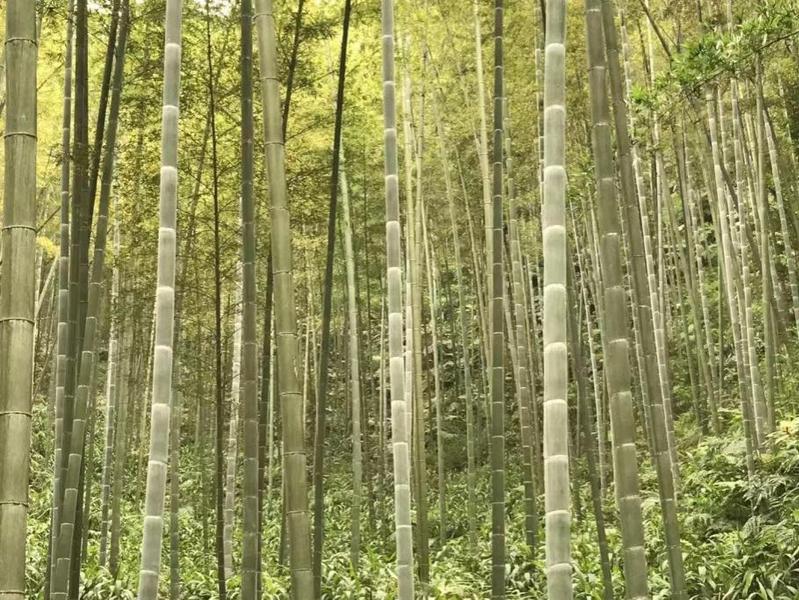福建农林大学林学中心︱青春“竹”梦,不负韶华
福建农林大学海峡联合研究院基础林学与蛋白质组学研究中心 (简称林学中心) 科研人员在植物基础科学领域深耕多年, 其多项基础研究成果发表于Science, Cell, Nature Communications, Molecular Plant, PNAS, Cell Reports, PLoS Genetics 等国际学术期刊. 在此基础上, 该中心更于近年在竹类研究领域取得多项进展。在国际学术期刊上发表竹类研究论文十一篇,初步实现了在福建省最重要的林木之一——竹子相关研究领域实现重点突破、从无到有、世界领先的目标。

林学中心近年来建立了竹子营养体转化体系与竹子基因编辑体系[1,2], 为将来通过分子育种进行竹子林艺性状的改良提供了有力的技术支撑。为实现提高竹笋与竹材产量质量这个长远目标,中心科研人员对毛竹的表观遗传组、转录组、与蛋白质组等进行系统分析。建立了毛竹表观遗传组与转录后调控[3],选择性拼接和环状RNA等不同分子形态的模式[4,5],以及毛竹基因组表达的花、叶、根鞭等器官发育调控与多种激素,光、温度等内外因响应调控网络[6-10]。同时,中心科研人员还研究并建立毛竹及其主要害虫刚竹毒蛾的首个竹类“寄主-昆虫”二级营养关系模型,并在此基础上探索了年龄尺度上毛竹抗虫害的分子机理[11],为从品种改良和营林措施角度改善竹林健康状况提供了关键理论依据。
多年来全球森林面积逐年下降,而竹林种植面积却以每年3%的速度递增;因此,竹林在森林碳汇和应对全球气候变化方面将起到日益重要的作用。我国竹产量占全球总量的1/4,居世界之首, 福建省的竹林面积高居全国首位。竹产业不但为食品、建筑、化工和航空航天等诸多领域提供原材料,并且为分布在占国土面积69%的山区约755万农民的就业、创收与脱贫提供重要支撑。长期以来竹类研究人少力薄,林学中心为提升竹类研究水平所做的努力对福建省乃至全国的竹产业的发展均有重要的现实意义。在植物诸相关学科领域,林学由于林木生长周期较长的原因一向为科研产出相对较慢的领域。但林学中心科研人员将与全国以及世界各国同行加强合作以加快竹类研究的进步。
参考文献
[1] Ye et al. An efficient plant regeneration and transformation system of ma bamboo (Dendrocalamus latiflorus Munro) started from young shoot as explant. Frontiers in plant science (2017) 8: 1298.
[2] Ye et al. Robust CRISPR/Cas9 mediated genome editing and its application in manipulating plant height in the first generation of hexaploid Ma bamboo (Dendrocalamus latiflorus Munro). Plant Biotechnology Journal (2019).
[3] Yu et al. Large scale profiling of protein isoforms using label-free quantitative proteomics revealed the regulation of nonsense-mediated decay in moso bamboo (Phyllostachys edulis). Cells (2019) 8(7): 744.
[4] Wang et al. Comprehensive profiling of rhizome‐associated alternative splicing and alternative polyadenylation in moso bamboo (Phyllostachys edulis). The Plant Journal (2017) 91(4): 684-699.
[5] Wang et al. The interplay between microRNA and alternative splicing of linear and circular RNAs in eleven plant species. Bioinformatics (2019) 35(17): 3119-3126.
[6] Liu et al. Transcriptome profiling reveals the crucial biological pathways involved in cold response in Moso bamboo (Phyllostachys edulis). Tree Physiology (2019).
[7] Wang et al. GSK3/shaggy-like kinase 1 ubiquitously regulates cell growth from Arabidopsis to Moso bamboo (Phyllostachys edulis). Plant Science (2019) 283: 290-300.
[8] Wang et al. Genome-wide analysis and transcriptomic profiling of the auxin biosynthesis, transport and signaling family genes in moso bamboo (Phyllostachys heterocycla). BMC genomics (2017) 18(1): 870.
[9] Wang et al. Genome-wide profiling of circular RNAs in the rapidly growing shoots of moso bamboo (Phyllostachys edulis). Plant and Cell Physiology (2019) 60(6): 1354-1373.
[10] Zhang et al. Transcriptome characterization of moso bamboo (Phyllostachys edulis) seedlings in response to exogenous gibberellin applications. BMC plant biology (2018) 18(1):125.
[11] Li et al. The interactions of PhSPL17 and PhJAZ1 mediate the on- and off- year moso bamboo (Phyllostachys heterocycla) resistance to the Pantana phyllostachysae larval feeding. Pest management science (2019) 76(4):1588-1595.
林学中心发表论文链接:
http://net.fafu.edu.cn/bfpc/lw/list.htm











